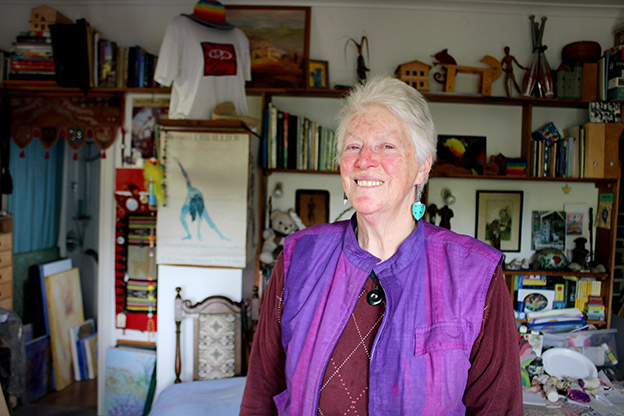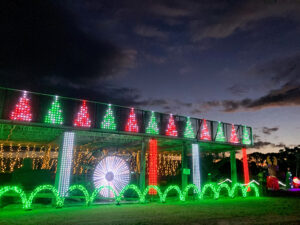Speaking from her home in Matatoki, which she shares with her wife of eight years, Therry, Dr Miriam Saphira sits by a hearth similar to one from her childhood, with chairs either side of a roaring fire.
The shelves contain some of her own writings, like Amazon Mothers, and The Sexual Abuse of Children – which was the first book of its topic when it was first published in 1981.
But her story starts at “the beginning of hard projects”, before she received diplomas in clinical psychology and educational psychology, and her PhD in psychology, and before she was named a Companion of the New Zealand Order of Merit for her services to the LGBTQIA+ community in this year’s Queen’s Birthday and Platinum Jubilee Honours.
“I left school and was quite depressed at the time because I had read in an encylopedia that homosexuals had arrested development… so, I thought they were all short, but I kept growing and growing.”
A bottle of poison was the tool of choice in a suicide attempt which left her with a damaged throat and life-long breathing issues. But an internship and a lack of confidence in working with people saw her placed in a prison, a stint which started her discussions with sex offenders.
“I realised they didn’t tell me everything, but I also realised that once I got them on-board to talk, they were very angry men,” she says.
“They had been abused as children, physically and some sexually. It was just horrible; horrible, horrible stories, and I thought we had to try and stop it by bringing it out into the open.”
It was an experience that led Miriam on a crusade to put taboo topics, like incest, sexual abuse of children, prostitution, and violence against women, under the spotlight.
In order for information to be available to help organisations receive grants, Miriam put a questionnaire into Women’s Weekly calling for insight into abusive relationships. She received 280 responses.
Soon after, she placed another questionnaire into the magazine relating to sexual abuse and recieved 385 responses.
“And their stories were even more shocking,” she says.
The answers were the basis of Miriam’s pioneering book The Sexual Abuse of Children, which was published in 1981 and has become a key reference for those working with abused children and offenders.
Throughout her life, Miriam was told she was “opening a can of worms” but her work persisted, with her books For Your Child’s Sake, and Look Back, Stride Forward. And it was in Berlin where she first thought about museums “not having much” to support the lesbian community.
“My friends took me to a museum and said: ‘You won’t find anything lesbian here’, but we were standing outside and I looked up and there were two female statues.
“I said: ‘They’re looking at each other, not looking at any men, or down looking for any men… so, there’s a possibility,” she says.
Miriam went on to establish New Zealand’s first museum of lesbian culture, The Charlotte Museum Trust, in 2007, which now holds 800 artefacts and 2100 books and magazines.
“We tried to write grant applications [for the museum] without using the word ‘lesbian’, using ‘women’ instead, but it’s fairly hard to do that and be honest, and I’m a very honest person,” she says. “Now, we are much more accepted and much more supported.”
Miriam’s successes include receiving the New Zealand Suffrage Centennial Medal in 1993, and being named 2010’s Lesbian of the Year for her contribution to the community.
When asked if she has always been unafraid of being outspoken, Miriam tells The Profile that early traumas and being bullied at school meant the opposite.
“Things would make me nervous and I would keep well away,” she says. “My brother would always be poking at me or punching at me, and kids at school didn’t like me and teased me, so I was used to being sidelined, I suppose.
“But working with sex offenders and at the prison, I thought: we had to do something and bring it out in the open.”
Miriam was honoured in this year’s Queen’s Birthday Honours alongside Thames Valley locals Wati Ngamane, Denise Messiter, Adrienne Dalton, Keith Woodley, and Ruth Aitken, who was made a Dame.




